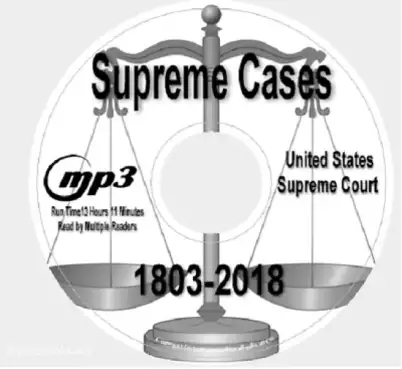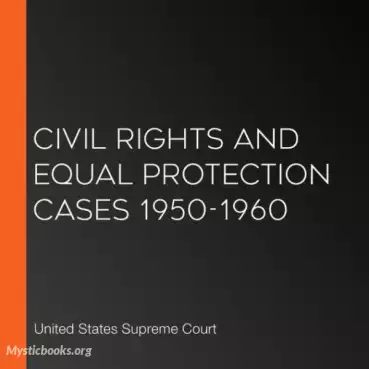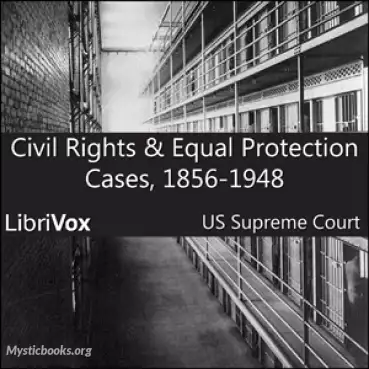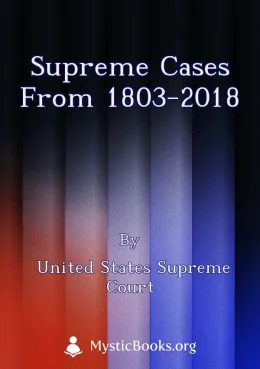United States Supreme Court
The Supreme Court of the United States (SCOTUS) is the highest court in the federal judiciary of the United States of America. It has ultimate and largely discretionary appellate jurisdiction over all federal and state court cases that involve a point of federal law, and original jurisdiction over a narrow range of cases, specifically "all Cases affecting Ambassadors, other public Ministers and Consuls, and those in which a State shall be Party." The Court holds the power of judicial review, the ability to invalidate a statute for violating a provision of the Constitution. It is also able to strike down presidential directives for violating either the Constitution or statutory law. However, it may act only within the context of a case in an area of law over which it has jurisdiction. The Court may decide cases having political overtones but has ruled that it does not have power to decide non-justiciable political questions.
Established by Article Three of the United States Constitution, the composition and procedures of the Supreme Court were initially established by the 1st Congress through the Judiciary Act of 1789. As later set by the Judiciary Act of 1869, the Court consists of the chief justice of the United States and eight associate justices. Each justice has lifetime tenure, meaning they remain on the Court until they die, retire, resign, or are removed from office. When a vacancy occurs, the president, with the advice and consent of the Senate, appoints a new justice. Each justice has a single vote in deciding the cases argued before the Court. When in majority, the chief justice decides who writes the opinion of the court; otherwise, the most senior justice in the majority assigns the task of writing the opinion.
The Court meets in the Supreme Court Building in Washington, D.C. Its law enforcement arm is the Supreme Court Police.
It was while debating the separation of powers between the legislative and executive departments that delegates to the 1787 Constitutional Convention established the parameters for the national judiciary. Creating a "third branch" of government was a novel idea; in the English tradition, judicial matters had been treated as an aspect of royal (executive) authority. Early on, the delegates who were opposed to having a strong central government argued that national laws could be enforced by state courts, while others, including James Madison, advocated for a national judicial authority consisting of various tribunals chosen by the national legislature. It was also proposed that the judiciary should have a role in checking the executive's power to veto or revise laws. In the end, the framers compromised by sketching only a general outline of the judiciary, vesting federal judicial power in "one supreme Court, and in such inferior Courts as the Congress may from time to time ordain and establish." They delineated neither the exact powers and prerogatives of the Supreme Court nor the organization of the judicial branch as a whole.
Under Chief Justices Jay, Rutledge, and Ellsworth (1789–1801), the Court heard few cases; its first decision was West v. Barnes (1791), a case involving procedure. As the Court initially had only six members, every decision that it made by a majority was also made by two-thirds (voting four to two). However, Congress has always allowed less than the court's full membership to make decisions, starting with a quorum of four justices in 1789. The court lacked a home of its own and had little prestige, a situation not helped by the era's highest-profile case, Chisholm v. Georgia (1793), which was reversed within two years by the adoption of the Eleventh Amendment.
The court's power and prestige grew substantially during the Marshall Court (1801–1835). Under Marshall, the court established the power of judicial review over acts of Congress, including specifying itself as the supreme expositor of the Constitution (Marbury v. Madison) and making several important constitutional rulings that gave shape and substance to the balance of power between the federal government and states, notably Martin v. Hunter's Lessee, McCulloch v. Maryland, and Gibbons v. Ogden.
The Marshall Court also ended the practice of each justice issuing his opinion seriatim, a remnant of British tradition, and instead issuing a single majority opinion. Also during Marshall's tenure, although beyond the Court's control, the impeachment and acquittal of Justice Samuel Chase from 1804–1805 helped cement the principle of judicial independence.
Books by United States Supreme Court

A Collection of Supreme Court Opinions: 1803-2018
These cases involved questions that came before the Supreme Court that needed answers. The questions in order of appearance in this project are as follows. Does Congress have the power to pass laws that override the Constitution? What shall we do abo...

Civil Rights and Equal Protection Cases 1950-1960
Landmark United States Supreme Court decisions focusing on civil rights and equal protection between 1950 and 1960.

Civil Rights and Equal Protection Cases 1856-1948
Landmark United States Supreme Court decisions focusing on civil rights and equal protection between 1856 and 1948.

Supreme Cases from 1803-2018
This book examines a selection of pivotal cases decided by the United States Supreme Court from 1803 to 2018. It delves into the legal arguments, historical context, and lasting impact of these decisions, providing insights into the evolution of Amer...
